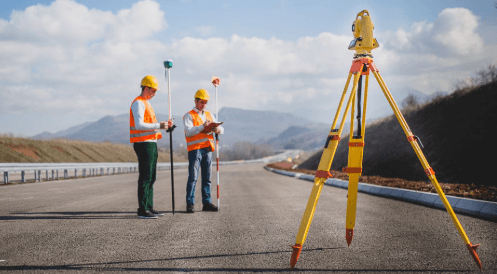A Complete Guide to Topographical Land Surveys: Process, Tools, and Uses

Understanding the physical characteristics of a land parcel is critical for any construction, development, or environmental project. A topographical land survey offers detailed insights into a site’s terrain, natural features, and man-made structures, providing the foundation for informed decision-making. Whether you are a property developer, architect, engineer, or landowner, knowing the essentials of topographical surveys helps ensure project success.
This comprehensive guide explores the process, tools, and uses of topographical land surveys to help you understand their vital role.
What Is a Topographical Land Survey?
A topographical land survey is a detailed mapping of a land area’s natural and artificial features. It focuses on capturing elevations, contours, and the precise location of physical elements such as:
- Hills, slopes, valleys, and depressions
- Water bodies like rivers, ponds, or wetlands
- Vegetation including trees and shrubs
- Buildings, fences, roads, and utilities
- Manholes, poles, and other infrastructure
The survey produces contour maps or 3D models that represent the site’s surface in detail, often essential for planning, design, and regulatory approvals.
The Topographical Survey Process
Conducting a topographical survey involves several key stages designed to capture and convert physical site data into usable information.
1. Pre-Survey Preparation
Before the survey team arrives onsite, preparatory work includes:
- Reviewing existing maps, site plans, and aerial imagery
- Defining survey boundaries and key objectives with the client
- Planning logistics, such as access permissions and equipment needs
This phase ensures the survey covers all necessary areas and features for the project’s scope.
2. Field Data Collection
Surveyors visit the site to collect raw data using specialized equipment. This typically includes:
- Measuring elevations and distances between points
- Recording natural features like trees and watercourses
- Capturing man-made elements such as buildings and roads
- Using GPS or total stations to pinpoint exact locations
The data collection process requires precision and often involves navigating difficult terrain safely.
3. Data Processing and Analysis
Back at the office, surveyors process the raw data with advanced software to:
- Generate contour lines showing elevation changes
- Digitally map site features with symbols and annotations
- Create 2D plans or 3D digital terrain models
- Verify accuracy and resolve inconsistencies
The output is tailored to the client’s needs, whether detailed CAD drawings or BIM models.
4. Deliverables and Reporting
The final survey package typically includes:
- Detailed contour maps with spot heights and elevations
- Plans showing natural and artificial features
- Digital files compatible with design and engineering software
- Reports outlining survey methods, accuracy, and any site observations
These deliverables serve as a trusted reference for architects, engineers, and planners.
Essential Tools Used in Topographical Surveys
Technology plays a crucial role in enhancing the accuracy and efficiency of topographical surveys. Key tools include:
Total Stations
These electronic/optical instruments measure angles and distances from a fixed point, ideal for establishing control points and mapping smaller areas with precision.
Global Positioning System (GPS)
High-accuracy GPS receivers capture coordinates of survey points, especially useful for larger sites or difficult terrains.
3D Laser Scanners (LiDAR)
Laser scanners emit rapid pulses to measure distances, creating detailed point clouds that represent the site in 3D with millimeter accuracy.
Drones (Unmanned Aerial Vehicles – UAVs)
Drones capture high-resolution aerial imagery and can conduct photogrammetry surveys, producing 3D models of inaccessible or expansive sites quickly.
Photogrammetry Software
This software processes overlapping photographs to create 3D surface models, useful for detailed feature documentation.
CAD and BIM Software
Survey data is integrated into CAD (Computer-Aided Design) or BIM (Building Information Modeling) platforms for design, analysis, and collaboration.
Common Uses of Topographical Land Surveys
Topographical surveys serve a wide range of applications across industries:
1. Land Development and Site Planning
Developers and planners use topo surveys to assess land suitability, design building footprints, layout roads, and plan utilities, ensuring developments harmonize with the natural terrain.
2. Construction and Engineering
Accurate elevation data supports foundation design, earthworks calculations, drainage planning, and infrastructure placement, minimizing costly errors during construction.
3. Environmental Management
Topo surveys help identify sensitive natural features, monitor erosion, and design stormwater management systems, aiding sustainable development and regulatory compliance.
4. Agriculture and Land Management
Farmers and land managers use topographical data for irrigation planning, soil conservation, and efficient land use.
5. Mining and Resource Extraction
Mining operations require precise topographical data to plan excavation, manage waste disposal, and monitor land changes over time.
6. Disaster Management and Risk Assessment
Topo surveys support flood modeling, landslide risk analysis, and emergency planning by providing detailed terrain information.
Benefits of Conducting Topographical Land Surveys
- Informed Decision-Making: Provides reliable data to guide design and construction choices.
- Cost Efficiency: Reduces unforeseen site challenges and expensive rework.
- Regulatory Compliance: Supports permit applications and environmental assessments.
- Project Accuracy: Ensures precise measurement for engineering and architectural plans.
- Environmental Protection: Helps preserve natural features and plan sustainable developments.
Choosing the Right Surveyor
To maximize the benefits of a topographical survey, select a qualified and experienced surveyor who:
- Uses modern technology suited to your project size and complexity
- Understands local regulations and standards
- Provides clear, detailed deliverables in formats compatible with your design team
- Communicates openly and supports your project timeline and goals
Conclusion
Topographical land surveys are an indispensable tool in modern land development, construction, and environmental management. Their detailed, accurate depiction of the terrain and site features enables smarter planning, reduces risks, and facilitates compliance with regulations.
Understanding the process, employing the right tools, and recognizing the diverse uses of these surveys empower project teams to build successfully and sustainably. Whether you’re preparing for a major development or managing existing land assets, investing in a professional topographical survey is a critical first step.




